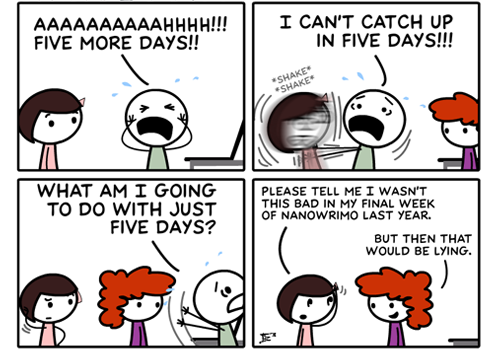Chris Baty's Blog, page 171
January 12, 2015
After Editing: Polishing an Incomplete First Draft
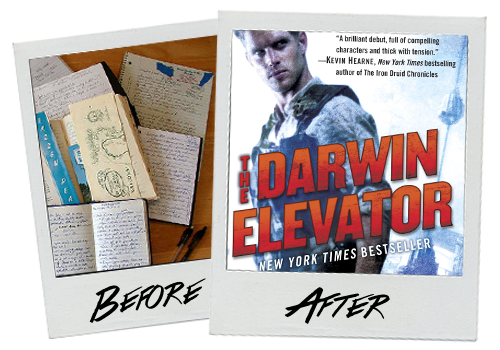
The “Now What?” Months are here to guide you through the editing, revision, and publishing processes! Every novel is the “after” picture to the first draft’s “before”. Today, Jason M. Hough, author of The Darwin Elevator and the forthcoming Zero World, tells us how he turned his unfinished NaNo draft into a New York Times bestseller.
Plus, this Thursday, he and author Susan Dennard will be live-streaming their best tips for polishing a NaNo-novel draft! Donate to join them here.
The first draft: My two NaNoWriMo efforts, while both victorious, left me in very different places. The first year, I wrote a complete novel, by which I mean I finished with the words “The End” at 50,280 words. The experience was rewarding and hooked me on writing, but the book fell apart at the halfway mark. I only finished out of stubbornness.
The second year, I had a plan. I went in with an outline and loads of upfront research. I wrote 52,000 words that November, which only took me to the 1/3 mark on my outline. More importantly, I was stoked about what I’d written, and hungry to keep going. Still, I had to finish that first draft before I would allow myself to revise…
I recommend that approach, because your vision of where you want to take your novel may change drastically once fully written. I had no desire to revise freshly written chapters only to later delete them for pace or plot reasons.
You must come to terms with the knowledge that your first draft will be ugly. Have confidence in your ability to make it shine later. Get the story out, step away from it. Come back with fresh eyes and start your revisions.
The makeover: When I revise, I start big. Major structural changes to the story, overhauling bland or one-dimensional characters, that sort of thing. With each pass I narrow my focus, until finally I’m just tinkering with prose. You’ll know you’re done when you can’t really decide if the changes are helping or hurting.
You know that feeling when, an hour after a conversation, you suddenly think of something brilliant you should have said? That perfect reply? That hilarious, insightful, or just damned clever quip? Well, I love revising because it’s like getting to do that over and over again.
Editing is the fun part of the writing process to me. Every hour spent makes the book appreciably better. Elegant solutions to nasty plot holes leave you feeling like you just solved a Rubik’s Cube in 22 seconds flat. Embrace it!
The final product: How did the final draft of The Darwin Elevator compare to the first? If I were to summarize the plot, they’d sound identical—that’s good, it means my outline worked. But I’d venture to guess fewer than 10% of the original words survived.
I cut sprawling, irrelevant subplots. I went from 11 POV characters to 4, requiring half the chapters to be rewritten from a different perspective. I wrote an entirely new opening chapter because once the draft was done I thought of a better opening scene (that last has become a trend for me, by the way). Most of all, though, I worked on the characters, looking for any opportunity to bring more of their personalities to the page.
And the payoff? That book eventually became a bestseller.
Jason M. Hough (pronounced ‘Huff’) is the bestselling author of The Darwin Elevator, The Exodus Towers, and The Plague Force. In a former life, he was a 3-D artist, animator, and game designer. He began writing The Darwin Elevator in 2008 as a NaNoWriMo project. The book, his first publication, reached the New York Times Bestseller list shortly after release. His next novel, Zero World, is coming in 2015. He lives near Seattle, Washington with his wife and two young sons.
January 9, 2015
3 Steps to Turn Your Manuscript from Monster to Masterpiece
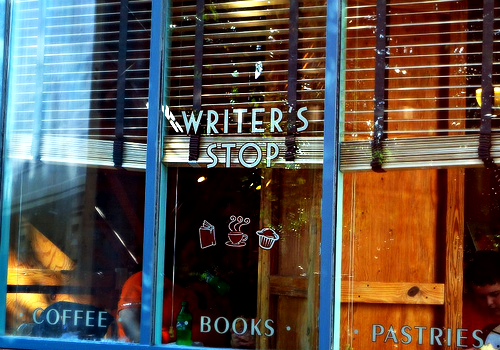
The 2015 “Now What?” Months are here! Throughout January and February, we’ll be bringing you editing, revision, and publishing advice from all corners of the publishing world. Today, author Kitty Burroughs, offers you a 3-step revision process to get you started:
As a young writer, I was in love with the idea of myself as a coffeehouse regular. I was convinced that once I found the right place, I’d peck out literary masterpieces between sips of triple-venti-caramel macchiato-flavored inspiration.
I’d write my novels from beginning to end, as much a passenger for my characters’ journey as their creator. I envisioned myself becoming one with the ambient hum of their caffeinated culture, simultaneously trendy and transcendent. I never once contemplated my editing process, because editing was for people not as cool as I was going to be (and I was going to be so cool)…
As it turns out, I’m allergic to coffee. Also, I have ADD. My most effective writing method has been to pile everything together and figure out what’s fit for human consumption after the fact, not hope for inspiration to drop a novel into my lobes, wholly-formed and perfect. The first editing pass is my saving grace—my friend. Let it be yours, too.
Step One: Give your horrible monster child a good, hard look square in the eye. Figure out what it is. Identify what it isn’t.
Give your tired eyes a break and translate your manuscript to a different form. If it’s longhand, type it up; if it’s digital, print it out.
As you read, find your bare bones. Can you list your characters’ motivations? The main sources of conflict? Would a reader who doesn’t have the benefit of seeing your inner landscape understand what you were trying to get across? Where are the disconnects, if any?
Step Two: Forget it’s your baby. Stab mercilessly.
During NaNoWriMo, word count is king, but I can promise you that not all of your words are good ones. It’s statistically impossible, okay? Just trust me on this. Try to do a cutthroat edit— what is the absolute minimum amount of material that your plot needs to survive? What is truly essential, and what are you clinging to? Does that dialogue need to be said to move the story along, or are you keeping it because you think your audience might not appreciate your cleverness?
Identify and eliminate the elements that have the potential to distract—or, even worse, bore—your readers. Don’t be precious.
Step Three: Save your revised version, then see Step One.
Kitty Burroughs is a YA novelist who is overly invested in friendship, LGBTQA representation, and people who wear spandex and habitually take bites out of crime.
Top photo by Flickr user Stephh922.
January 7, 2015
It’s a brand new year, writers! You know what that means:...
It’s a brand new year, writers! You know what that means: it’s time to get serious about editing your NaNo-novel—if, of course, you want to.
NaNoWriMo 2014 sponsor, Blurb Books, hosted a chat with author Rachael Herron, and our own executive director, Grant Faulkner, to talk all things revision, and answer questions like:
Why edit?
“Revision involves the joy of bringing out the depth of character and action. Fulfilling a work’s potential is a gift, essentially.” — Grant
How do I start?
“I don’t read the first draft very closely, but I skim it, and I make a note of every scene. Then, I’ll have a list of the whole book, which is when I start to draw connections.” — Rachael
How do I stay motivated?
“For me, and for a lot of NaNoWriMo participants, we do really well under these number crunches. My first editing pass at a novel, I set a goal to go through two to three thousand words a day. Of course, you’ll discover your own word-count goal, your own perfect motion.” — Rachael
What do I do with my book when I’m done revising it?
Publish it with Blurb! As a 2014 sponsor, they’re offering Wrimos a free softcover copy of their book and more. Just submit your novel by January 31!
December 19, 2014
Wrimos Around the World: Of Webcomics, Coffee Crawls, & Kiki's Delivery Service
One of the best parts of NaNoWriMo? The incredible community of writers that gathers every November. Today, we spotlight Errol Elumir, artist, musician, NaNoWriMo fanboy :
You draw a webcomic every November called NaNoToons. Give us the scoop!
NaNoToons was started by my good friend and mentor Debbie Ohi back in 2006. She has a writing webcomic called Will Write For Chocolate and her characters were doing NaNoWriMo. That’s when NaNoToons were born…
In regards to inspiration, the events that happen in the NaNoToon universe are directly taken from the events from my region in Toronto. In this year’s NaNoToons, there was a coffee crawl and they went to four coffee shops. I made sure that I used the color scheme of each of the actual coffee shops for each panel! Last year, they went on chat a lot, because I used to hang out in the chatroom daily.
What is NaNo’s role in your backstory? How did you first discover the world of noveling?
I used to write a lot of fanfiction, and in particular, Blizzard fanfiction (yes, I wrote stories about Warcraft and Starcraft). In 2006, someone on the forums mentioned NaNoWriMo and I thought it was the most amazing thing I had ever heard; I immediately signed up. There was a problem, however. I heard about it on November 23. I had seven days to finish my novel, which I did, but at the cost of not talking to anyone about it.
The following year, I signed up and I went to every social event that I could. The Toronto NaNo region was bombarded by me. In subsequent years, I have: written songs about NaNo, directed a NaNoWriMo musical, recorded a Project for Awesome video for NaNo, and, of course, drawn NaNoToons. I am such a NaNoWriMo fanboy.
What was your novel about this year? Tell us in six words!
I have a few creative partners and one of them is ‘Manda Whitney, whom I write scripts with. We had this idea of doing a Paranormal Investigator Adventure game, so I spent my NaNo writing the novelization of that game!
Aw crumbs, that’s not six words.
We’ve noticed you seem to have a particular affinity for Studio Ghibli movies. If you could live in the world of any Studio Ghibli movie, which would it be and why?
Yes, I am huge fan for Studio Ghibli and I have no idea why they never appeared in the NaNoToons until this year, considering all I do is throw in my fandoms whenever I get the chance.
Any world, eh? The most wonderful thing about Miyazaki’s worlds is that you will never see skies that are bluer, water more clean, nor food more delicious. The characters burst with the enjoyment of life. It’s amazing how the films make me nostalgic for a period that I have never experienced. I will go with Kiki’s world, because it’s my wife’s favourite movie and she would love being near the water.

Errol Elumir likes to be creative and loves to interact with people. He is a huge NaNoWriMo fanboy and usually his November is devoted to NaNoWriMo insanity.
December 17, 2014
NaNoWriMo 2014: The Little Website That Could

Earlier in November, we promised you the straight dope from our technical director, Dave Beck, himself. He reflects on the rocky beginnings of his very first NaNoWriMo, and how our tech team found triumph despite it all:
One of my takeaways from my first November as NaNoWriMo’s technical director was an intense feeling of empathy with my predecessor, Dan Duvall. Dan served well and nobly for five years, until he finally succumbed to shell shock and is now living out his days in a sanatorium with green pastures and pretty nurses in upstate New York.
…Not really. Dan now toils nobly at Wikimedia Commons, helping serve up images like the one above—but early November 2014 I felt like the next doughboy to man the machine gun, with Sergeant Dan lying bleeding and broken nearby, propped up by the bodies of past developers. Our site, nanowrimo.org, was throwing 404 timeout errors, and nobody could update their word counts. The Young Writers Program servers were behaving like a bunch of drunken ballerinas, and the YWP ship was listing dangerously. In short, our metaphors were badly mixed.
First, a little history. NaNo has been, since its inception, the under-funded, under-manned little engine that could. The technical infrastructure was created initially by volunteer Friends of Baty, then by a succession of stalwart developers with different skills and feeble budgets.
Our online systems are a potpourri of recent Ruby on Rails code, hopelessly outdated Drupal 5, and an assortment of ancient, mostly deprecated server applications. Coding for NaNoWriMo sometimes feels like an archeological dig. Is anybody still using this stone axe? Seriously, will our email fail if we throw away this stone axe?!?
Among the stone axes is the YWP website code. At our November peak we run 96 server instances (virtual servers) on Amazon Web Services, some 32 of which are devoted exclusively to powering the Young Writers Program. From Halloween morning until midday on All Saints Day I watched in horror as server after server would crash, recover briefly, then crash again. I checked and double-checked everything from asset and caching mounts to database connections, to no avail—the systems seemed to be inherently unstable.
And, in fact, they were. Things get a little technical here, so bear with me. Amazon Web Services instances start with a basic configuration called an AMI, which is sort of like the bedrock foundation for each server. With Dan’s help, we discovered that the AMI for YWP was allowing for too many simultaneous connections than the old Drupal 5 code could handle. A simple edit to the server configuration files solved the problem. Let loose the young writers!
On nanowrimo.org there were three separate issues contributing to the slowness. One of the perplexing questions is why the site didn’t have similar problems last year, because the buggy code had gone unchanged from one year to the next. The issues were all bottlenecks caused by server misconfigurations or improper coding, basically creating a massive traffic jam on the site. Here’s what we found and fixed:
In the code, every word-count update also updated the total word count for November 2014, which is stored in a single field in the database. With so many people trying to simultaneously modify the same single piece of information, the database server bogged down. Our new dashboard design no longer displayed the total global word count, so our steadfast developer Jezra Lickter simply removed the offending code, and voila! No bottleneck.
In the database, the latest word count is saved in the “novels” table, and so updating one’s word count also re-saved all the other novel information (like the title and synopsis). Saving one’s novel triggers a re-indexing of the novel search data, which can be time-consuming and CPU intensive, so every word-count update precipitated a weighty and largely unnecessary process. Jezra’s fix: only re-index the novel search when a searchable field is changed.
Finally, we discovered that each of the 40 nanowrimo.org server instances only allowed a maximum of 25 concurrent database connections, for a total of 1,000 simultaneous database connections. But our database server was configured to handle over 20,000 connections. A simple configuration edit on each instance unleashed the full power of our big AWS database server.
These three code modifications made the site orders of magnitude faster, eliminated almost all of the 404 errors, and will save us money on server costs next year. Although I’d rather the sites run flawlessly and without incident, the frustrating errors led to vast improvements in server speed and efficiency.
Thanks for your patience, all! Next year’s November will be much smoother, or I’ll be joining Dan in the asylum.

Dave Beck has a B.A. in Italian Literature and a Doctorate of Jurisprudence, and has worked as a chef, reporter, editor, museum exhibit developer, website designer, computer programmer, and now the Director of IT for the most awe-inspiring community on the planet. He and his beloved twin daughters are attempting to watch every great movie ever made.
December 15, 2014
A Farewell to 30 Covers, 30 Days 2014
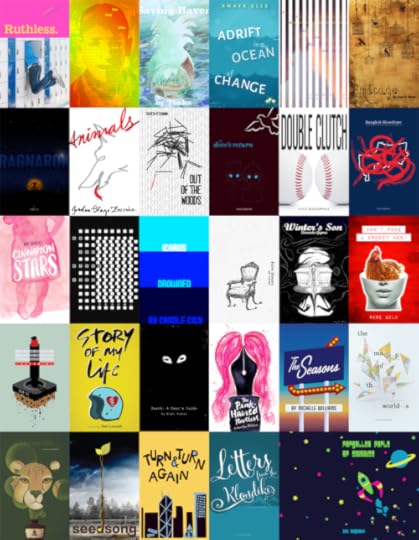
This was a triumph. We’re making a note here: huge success. It’s hard to overstate our satisfaction. Though we are sad to see this year’s phenomenal 30 Covers, 30 Days wind down to a close, we can’t begin to articulate what a wild and wonderful ride it’s been—and you helped to make it happen!
Throughout November, we saw covers roll in for novels from all corners of the world, from Denmark to Chile to New Zealand, and to be honest, not even our mysterious, omnipotent synopsis-choosing method could make room for all of the intriguing synopses you sent in. We can’t thank you enough! But that’s what we’re here to do today: say thank you.
First, overwhelming thanks to Debbie Millman, who facilitates this wonderful project year after year and even designed a cover herself this year—does her coolness know no bounds?
We can’t thank our amazing and generous designers enough, either (you can see all of their illustrious names at the end of this post), for their impulsive creativity, saintly patience, and positive attitudes. They worked hard and with unbridled enthusiasm to bring you the magnificent covers brightening the blog and forums this past month, so if you have the time, let them know how awesome they are.
Thank you. Even if you didn’t submit a synopsis, you still checked out the posts on the blog, kept the forums a-chatterin’, and spread the excitement of this project hither and yon.
Thank you. You are brave and bold creators, passionate storytellers, and all-around cool people. We don’t use that word lightly here at NaNo, so please know that we mean it. You’re the best. To everyone who had a hand (or even a finger) in 30 Covers, 30 Days 2014: you’re the bomb, and we wouldn’t have been able to do it without you. See you in 2015!
Here’s the 2014 genre breakdown:
Adventure: 3
Fantasy: 6
Young Adult & Youth: 1
Mystery, Thriller, & Suspense: 1
Horror & Supernatural: 2
Satire, Humor, & Parody: 1
Mainstream Fiction: 3
Science Fiction: 3
Literary Fiction: 1
Chick Lit: 2
Historical Fiction: 2
Religious, Spiritual, & New Age: 1
Romance: 1
Adventure & Fantasy: 2
And finally, we request nothing short of a thunderous round of applause for our incredible designers:
Andrew Twigg
Zipeng Zhu
Alberto Rigau
Thy Doan
Jonas Robinett
Jill Spaeth
Val Lehnerd (who did two!)
Andrew Herzog
Hannah Rubin
John DeGore
Josh Gallagher
Felix Sockwell
Josh Silverman
Jamie Suvak
Angela Flores
Kris Olmon
Seth Johnson
Karen Kurycki
Adria Robles-Morua
Tony Pinto
Nicole Stumphauzer
Traci Moore
Jordon Roberts
Sarah Thomas
Mark Dudlik
Emily Weiland
Tanner Woodford
Debbie Millman
December 12, 2014
NANOWRIMO | Your Stories Matter | Project For Awesome 2014
Do you like projects? Do you enjoy awesomeness? Boy, do I have great news for you: It’s Project for Awesome time! You can make a huge difference to NaNoWriMo with just a few clicks of the ol’ mouse.
The Project for Awesome is an annual YouTube event that raises both money and awareness for non-profit organizations. At the P4A website, you can vote for which organizations you think should get the money raised. Spoiler alert: we’re hoping you’ll vote for us.
All we need is two clicks.
Click above to go to the P4A website.
Then click on the big VOTE FOR THIS VIDEO button.
Just can’t get enough clicking? You can also vote on this video. Or any of the videos for NaNoWriMo on this page.
Then ask your friends to do the same by sharing, retweeting, and reblogging our Facebook, Twitter, and Tumblr posts.
NaNoWriMo is a tiny organization that runs almost entirely on donations from its participants. Winning Project for Awesome would give us a much-needed boost to help empower hundreds of thousands of kids and adults to discover the power of their imaginations. The money we won during last year’s P4A was enough to pay for free classroom kits to be sent to 2000 classrooms in 170 countries, inspiring thousands of students around the world.
Thank you so much for your support. (And your clicks.)
— Sarah Mackey, Director of Community Engagement
December 10, 2014
The Inside Scoop on the Night of Writing Dangerously 2014
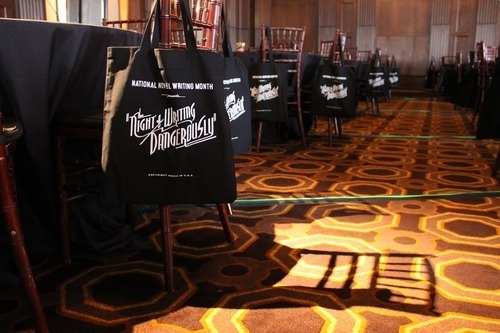
November isn’t just a month during which to write your novel… it’s also the month to get together with 225 other writers from around the globe at the largest write-in in the world. The Night of Writing Dangerously is our annual write-a-thon and Sachi, our operations intern, tells us how it went down in 2014. Won’t you join us next year?
Imagine my excitement: after working for NaNoWriMo and helping to plan the Night of Writing Dangerously, I was finally able to attend my first ever write-in.
Dressed in my noir-themed attire, I rode the elevator up to the Julia Morgan Ballroom, excited for a night of mingling, novel-inspired cocktails (Tequila Mockingbird? Yes, please), and, of course, writing. 
Our beautiful greeters awaiting participants.
The bar was buzzing with chatter and laughter as over 200 people waited for the ballroom doors to open and the writing to begin. People who had never met were behaving like old friends. It was not hard to see why— though the crowd was a mix of colors and creeds, they all had one thing in common: they were writers. Believe me, if you have never been to the Night of Writing Dangerously, you have never been among a group of people quite like this.

The Julia Morgan ballroom… and the calm before the storm.
Once those ballroom doors opened, the evening didn’t slow down. Between the candy bar, the never-ending flow of tea and coffee, the great food and even better company, the attendees still made the time to write. And write they did!
More than two hundred people in one ballroom added anywhere from 500 to 5000 words to their word counts. Over 373,000 words were written that night! So it makes sense that the chatter and the furious typing would sometimes be interrupted by a bell ringing from up in the front and cheers from the guests as someone was crowned NaNoWriMo champion for finishing their novel at the event.

Faithful Blobby guards the candy buffet with his wee arms.
There were fourteen gift baskets, two table wars, and six words sprints giving the participants so many different ways to engage with their fellow Wrimos and win some sick prizes!

Our office owl makes the trip to supervise your wise, wooly words.
If you didn’t get to go to the Night of Writing Dangerously this year, I seriously suggest that you plan to go in 2015. It is like nothing else that I have ever been a part of and I loved every second of it. You could not find a more enthusiastic and supportive group of writers if you tried and I know for myself that the Night of Writing Dangerously has become a November tradition.
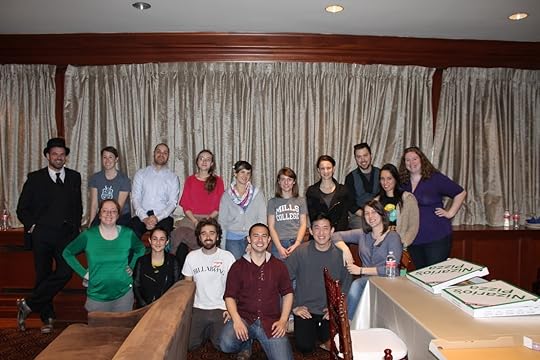
Your 2014 Night of Writing Dangerously staff and volunteers, everyone! See you next year!
December 9, 2014
I Published My NaNo Novel! Jack Soren on Revising His Manuscript, and Magic Curtains
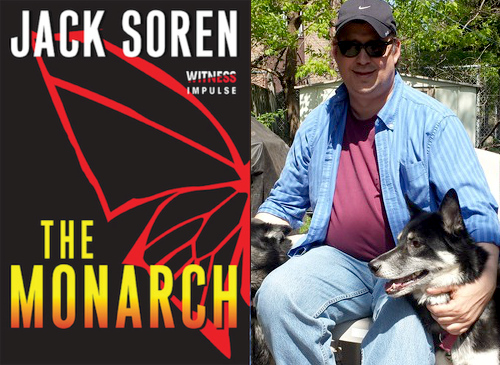
Jack Soren is a frequent participant of NaNoWriMo, and recently sold a book series to HarperCollins’ Witness Impulse imprint—the first of which, called The Monarch, is available now. We talk to him about his book, and just how he found himself published:
Have you participated in NaNoWriMo?
I’ve participated in NaNoWriMo several times over the years. The community and general helpfulness is fantastic. The opportunity to work with and mentor other writers is just as amazing.
The first third of the The Monarch's first draft was written during a recent NaNoWriMo. I continued writing for months afterward to bring it to completion, but I have no doubt that without NaNoWriMo there wouldn't have been anything to finish.
You recently became a signed author with HarperCollins. Congratulations! How did that happen? What steps did you make to go from an unsigned author to a signed one?
Thanks! Well, first you find out an editor’s jogging route. Then you buy a lot of duct tape…
Seriously, I followed the traditional route. Using Literary Market Place and QueryTracker, I sent queries to dozens of possible agents. I developed my queries using a variety of online sources, adjusting them as needed based on responses.
I didn’t end up acquiring an agent this way, but I did gather a ton of useful feedback from written responses and discussions with agents. This was far from a waste of time. The Monarch would not have been in the shape it was without this process. If I can offer any advice here, it’s listen. If you get four replies saying they liked the story and your writing but they can’t market a 200,000 word story about magic marbles, start cutting, baby.
After striking out with the agent approach, I started periodically submitting directly to publishers. Eventually, HarperCollins opened up their Witness Impulse imprint to unagented submissions. On a whim, two days after my birthday last September, I submitted the version of the manuscript that had been honed by all that previous rejection. In March, Chelsey Emmelhainz at HarperCollins, who would eventually become my editor, contacted me.
During a very surreal phone call where I mostly concentrated on not passing out, Chelsey said she’d like to publish my book. She then asked me if I’d ever considered writing it as a series. Luckily, my face broke my fall. I gave the answer everyone should give when an editor asks if you’ve ever considered writing your book as a series—of course!
Tell us about The Monarch. What is it about?
For a long time I’d wanted to write a thriller about a killer who was using priceless works of art as his weapon of choice. In one of my first NaNoWriMo attempts, I tried my hand at it but it didn’t really go anywhere.
Then in my most recent NaNoWriMo attempt, my day job was eating up so much of my life I didn’t have any prep time. So on November 1st, I just sat down and started typing. This idea came back to me as I wrote. As the story developed, it went from being a straight mystery-thriller to a cross with a techno-thriller.
What tips do you have for writers who are thinking about querying their NaNo-novels after their revision process?
Don’t give up! You need to develop a thick skin and understand that when you do receive rejections, they’re rejecting your work in its current state, not you. Use all the resources out there, as well. Forums, blogs, and websites are free and full of seasoned writers, editors and agents paying forward with their experience and advice. Seek them out.
And remember, editors and agents aren’t the enemy. They love books as much as you and are dying to help you be successful.
How do you juggle writing with day-to-day activities like interacting with your kids and running errands?
Time management is crucial. When you’re on deadline, that can get a little dicey. The solution is support. Without the incredible support of my daughter and my girlfriend, what I do wouldn’t be possible.
During my recent editing blitz, they not only knew to leave me alone during the 18 hours a day I was writing, but they put up a curtain and set rules that if the curtain was closed, you went away. Of course, if you ask them they’ll probably tell you the curtain wasn’t to keep them out, but to keep me in. Either way, it worked, and the curtain is a magic talisman that everyone respects, now. Including me.
And as it happens, I’m now selling magic writing curtains on Etsy for a mere…
Jack Soren’s favorite childhood movies usually starred either Jerry Lewis or Vincent Price. Jack recently signed a multi-book deal with HarperCollins for his debut thriller series. The first book in the series, The Monarch, is available now. The second book—Dead Lights—will follow in June 2015.
December 5, 2014
8 Ways to Fight the Post-NaNoWriMo Blues

Are you feeling the post-NaNoWriMo blues? Hannah Rubin, former intern and current writer and designer, shares her tips on how to keep your creative flame bright:
November is over. The thrill, the anticipation, the mad dash—the finish line has been reached. It can feel surreal to step into December and be forced to relinquish the beautiful purpose that has carried you through November, through moments of excited 2 a.m. scribbling, and hours of staring-at-a-blank-screen-while-the-cursor-blinks. It can feel so bizarre that, sometimes, it can feel like it didn’t actually happen.
But, resist the urge to click Save and never look back. Resist the desire to put it all behind you, to laugh about the craziness and no longer identify with it, to resume whatever life it was that you were living thirty days ago. You decided to put all normalcy aside for 50,000 words and write, and you did it for a reason. So keep on with it!
What you need is a plan for keeping the momentum alive. Here are a few key ways to keep the NaNo spirit alive:
Tell people.
Tell everyone. Say, “Hello, my name is Hannah (or your own name) and I just wrote a novel.”
It won’t seem real if you don’t. It will be too easy to close the file and move on.
Stay in touch with the Wrimos that you’ve written with.
Form a writing group that meets weekly or bi-weekly, and either write together or create a workshop together. These people that you’ve met are jewels, treasure them. Friends that write are the best friends to have, because they understand the drive inside of you, because they have it themselves.
Send a piece of your novel to someone you love, right now… but tell them not to say anything about it to you for a month.
Tell them to read through it, and write down everything they think in an email, but to press Draft instead of Send. Everything is too fresh, you aren’t ready to hear what other people have to say yet. You still have to wrap your head around how you feel.
Then, thirty whole days of thinking and mulling later, when January is just creeping up and you’ve gone on to convince yourself that you didn’t actually write a novel, and, if you did, it definitely wasn’t any good… there will be a message in your inbox, from a friend, talking to you about your novel, and telling you what they think, and celebrating your accomplishment. Suddenly all the voices will start speaking again.
Print the thing out.
It is much more seductive when it is a fluttering stack of pages on your desk, rather than as a document in a folder on your desktop inside your laptop. Buy some pens. Spread the whole thing out on your floor. Go to town. Cut things up if you have to. Make a physical story board. Tape it up on your wall. Pass it every day and think about it, until whatever it is that is tripping you up starts to make sense. Force it to continue existing.
Pick a sentence or paragraph that you love unabashedly and write it down.
Hide it somewhere in your room—either folded up in your wallet, pinned to the side of your mirror, tucked into a pair of socks.
You’ll forget and then one day, during the most ordinary of moments, you’ll be reminded. And if, perhaps, at that point in time, you had doubted your novel, you will be reminded of what you created.
Remember that all books started out as drafts, and rarely is it more than a sentence or two from a first attempt that makes it to the reader unchanged. You have that sentence. Now, go write.
Stay in touch with NaNoWriMo.
November may be over, but the awesome staff that puts it on is here year round. They exist to help you write your stories.
January and February are focused on editing and revision.
And then, just as you begin diving into that process, Camp will start, and you have a whole month to commit to some other insane writing project, or to commit to editing your novel.
Read.
You just spent a month writing. Now it is time for you to read. Read articles, read novels, read poetry, wash your mind in the words, phrases, cadences, ideas, imagery of other people. Lose yourself in reading—I find that it is when I am writing that I am able to most enjoy the literature of others. It holds me tightly, it doesn’t let me go. And it will re-light that weary flickering candle of November into a glowing flame.
Keep writing. It is who you are, after all.
Hannah Rubin is a writer and designer based in Oakland, CA. She used to intern at National Novel Writing Month, and still misses all the candy. See her 2014 30 Covers, 30 Days cover here.
Top photo by Flickr user skoop.
Chris Baty's Blog
- Chris Baty's profile
- 63 followers




